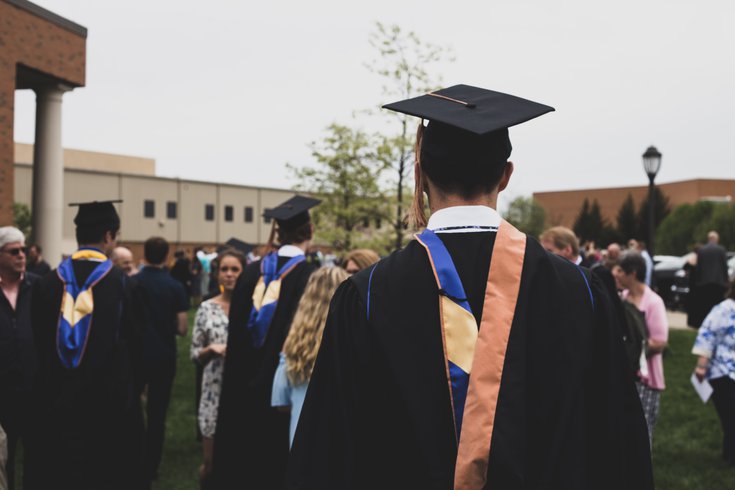
June 30, 2023
 Charles DeLoye/Unsplash
Charles DeLoye/Unsplash
The pandemic student loan payment pause is ending this fall. Here are some tips for preparing to resume payments.
Millions of Americans will soon resume making payments on their federal student loans as the more than three-year pause on loan payments and interest is set to end in September.
Many borrowers were hoping to have debt forgiven under President Joe Biden's student loan forgiveness plan announced last fall and are disappointed at Friday's Supreme Court decision to strike down the plan, which would have canceled $10,000 to $20,000 in federal student loan debt per borrower.
The end of the student loan payment pause was included in the Fiscal Responsibility Act, which was passed by Congress in early June as a way to suspend the federal debt ceiling and keep the United States from defaulting on its debt. House Speaker Kevin McCarthy, who spearheaded the legislation, praised the Supreme Court's decision on Friday morning, saying it "builds off of" the existing law ending the payment pause.
The interest-free payment pause on federal student loans was implemented in March 2020 in response to the COVID-19 emergency. It was supposed to last for just two weeks but was extended numerous times under the Trump and Biden administrations in response to the ongoing pandemic emergency.
The pause ends Sept. 1, and federal student loans will begin accruing interest before payments are due on Oct. 1. Borrowers previously had a rough idea of when the pause would end — Biden indicated earlier this year that payments would resume after Aug. 30.
As of last spring, about 500,000 federal student loan borrowers out of more than 43 million continued to make their payments during the pause, NPR reported. Other borrowers may be concerned about making payments on time and should make sure their student loan lenders have updated contact information and make necessary updates to their payment plans.
Below are several steps to prepare for federal student loan payments that resume this fall.
The first step in resuming payments is to reach out to your loan servicer. Many lenders have sent out preparation emails and letters to borrowers to help them prepare, but some people may be making payments to a company whose name they don't recognize.
Over the last three years, several companies — including Navient, the Pennsylvania Higher Education Assistance Agency and Granite State — have stopped acting as federal student loan servicers, meaning all accounts with them were sent to other servicers.
If you don't know or remember who your student loan servicer is, finding out is easy. Log in to StudentAid.gov or call the Federal Student Aid Information Center at (800) 433-3243 to find out who your loan servicer is and how to contact them.
Once you've contacted your student loan servicer or logged in to your account on their website, it's important to double-check that all personal contact information they have is correct. Since it's been three years since the payment pause went into effect, phone numbers, mailing addresses and email addresses may need to be updated.
This is also where you can add your banking information and set up automatic payments.
About 15% of borrowers were behind on student loan payments before the pause, a figure that is expected to grow now that payments are set to resume with no plan for debt relief, Bloomberg reported.
If you are struggling to fit the added expense into your budget, modifying your existing repayment plan could decrease the amount due monthly. The easiest way to do this is to apply for an income-driven repayment plan through StudentAid.gov.
While it may provide some relief, income-driven plans require borrowers to re-certify income each year to remain on the plan. You can also try a loan simulator to find the best repayment strategy for your income level and avoid delinquency or default.
On Friday, Biden said that the Department of Education will implement a 12-month "on-ramp" repayment period for borrowers who are unable to immediately resume making payments on their federal student loans. This would help them avoid delinquency or default. More information on this plan is available on the Department of Education's website.
While borrowers will not see the large sums of student debt relief that the Biden administration announced last fall, there are still some options for relief. Several new rules that are taking effect in July could broaden eligibility for the existing Public Service Loan Forgiveness program, which is aimed at providing debt relief for government workers, nurses, educators and those in the nonprofit sector.
Graduates of for-profit colleges and universities can apply for student loan debt relief under a separate program that went into effect earlier this year. The Department of Education proposed several student loan regulations that officials believe could reduce monthly payments and keep borrowers from being "overloaded with debt."
In response to the Supreme Court decision, Biden announced that the Department of Education will seek to provide student loan debt relief to borrowers using the 1965 Higher Education Act. Secretary of Education Miguel Cardona has started the process, though Biden said during his address on Friday that this path to debt relief may take longer. It remains unclear whether this plan will be met with legal challenges as well.